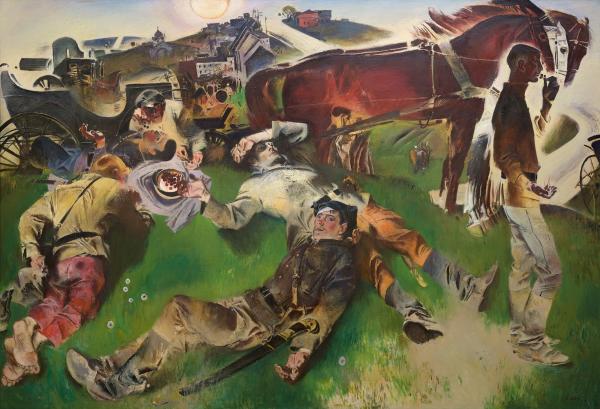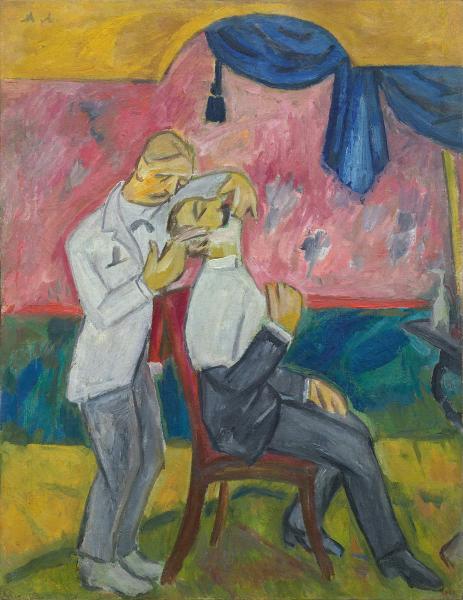The artist is Vrubel

Like everything that the master did, „Flying demon “ – deeply sincere and confessional picture. It is striking in the power of the tragedy plan and the tragic insoluble of contradictions: a young, strong hero-„Nietzschean "is not able to create evil and unable to open the ring of loneliness he created, to get out of „inner dungeon ". Proud, yearning, despising himself and everything, he drops in lifeless heights. Autobiography is here „superimposed “on the mood worn in the air „the end of the century “, making the picture of the relevant, expressing the attitude of many Russian people of those years.
The Russian Museum. From the icon to the present. 2005. With. 240.
+ About the restoration of the work
– Hide the text about restoration
The state of safety before restoration:
The picture written by the artist in 1899 was not over. This explains the presence of a large number of unwritten areas and the absence of a covering layer of varnish. The author’s colorful layer over the past time dried up due to the fact that the soil in the picture pulled out an oil binder from it. As a result, the painting was structurally weakened, lost density and monolithic. By the time of admission to the restoration of the back and front sides of the work, the layers of strong pollution had stitched in the texture. The tension of the base weakened, the stripping planes were printed, deformations arose in the corners and along the edges. The painting was struck by a rigid diverse raised craquelure, creating a threat of scree. Numerous scums, from small to sections of razor, were localized over the entire surface of the colorful layer.
Complex of the events:
The pre-conducted complex of laboratory tests made it possible to optimally determine the selection of restoration techniques for strengthening and laying craquelure on the work, where the artist used the cereal soil with the use of the soft and viscous resin of the "elements". Also, certain changes and another approach required the removal of contaminants from the surface of the colorful layer. As a result, all the main tasks were completed, the colorful layer and soil were strengthened, cleaned of the rolled pollution, the base was duplicated on a new canvas, and the picture was stretched over the subframe. To protect painting from external influences, ultraviolet rays and reduce the effect of temperature-humidity changes on the surface, a layer of matte dammar varnish is applied.
Keeping a story. Restoration workshop of the Russian Museum – 100 years. SPb, 2022. With. 134-135.


